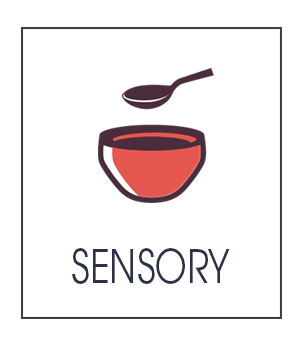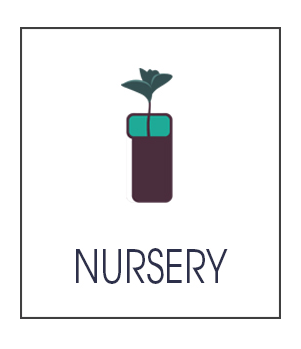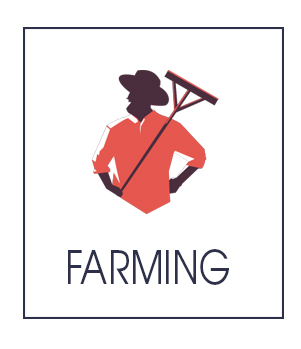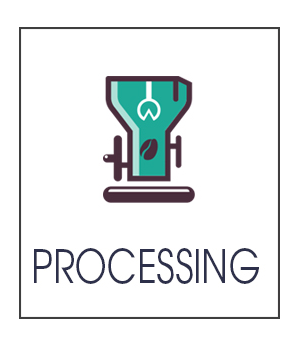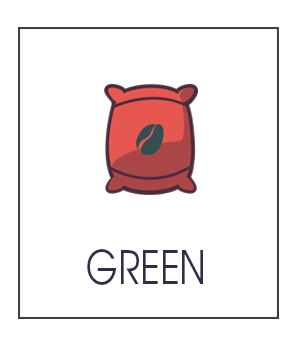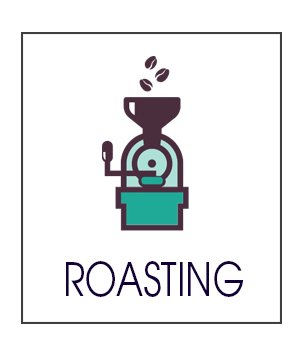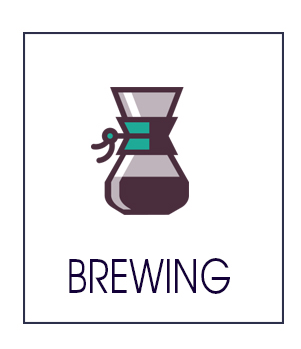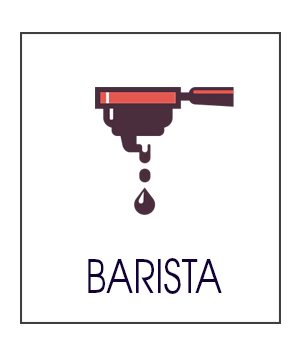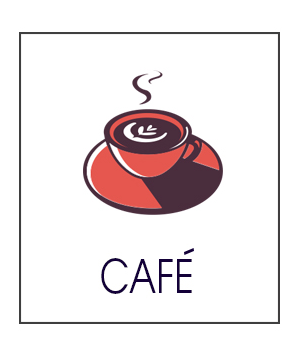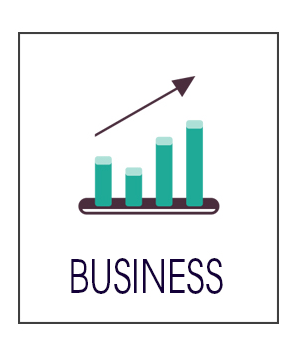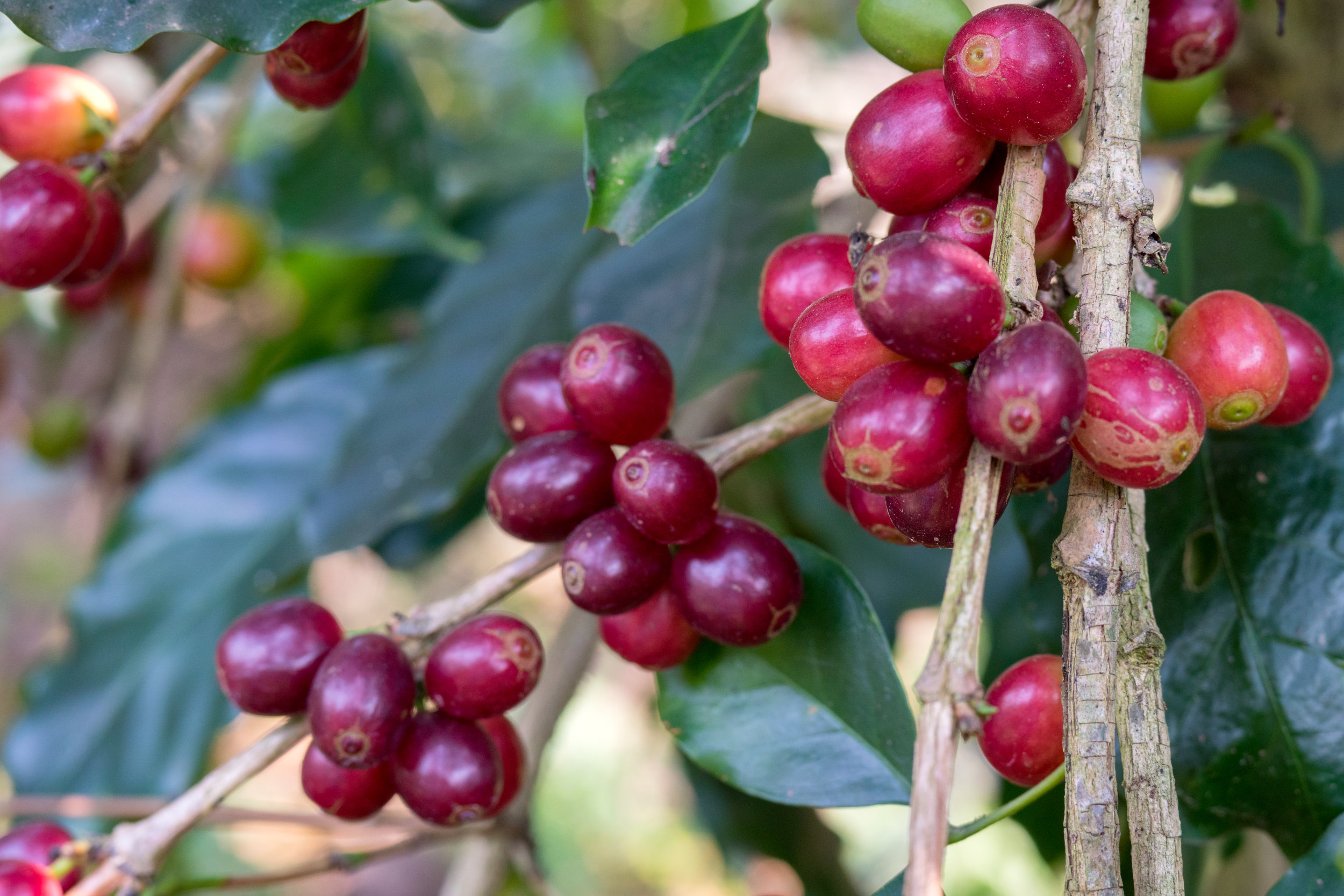Sensory
The Sensory module is geared towards the science and study of sensory perception to fine tune your use and consistency of certain attributes related to cupping coffee, including aroma, taste and tactile sensation. Throughout the levels students will build upon their ability, calibrate to their peers and learn how to cup -practicing with different origins, processing methods, densities, varietals and species, including Arabica and Robusta.
LEVELS
Level 1
- Day 1: Specialty coffee and sensory evaluation of quality. General physical inspection, roasting, brewing (water quality and temperature, extraction ratio), and SCI cupping protocols and standards.
- Day 2: Basic theory of aroma perception. Practice with aroma vials and descriptors. Identification of basic tastes (sugars, organic acids, salts, bitter and umami) and calibration on intensity and quality (modulation).
- Day 3: Introduction and informal exercises of affective, discriminative and descriptive cupping of the same coffees. Cupping tutoring. Learning the SCAA cupping protocols and format. Cupping tutoring using the SCAA format and sharing descriptors. Cupping different origins (defining flavor profiles) and basic processing methods (naturals, washed, honeys).
Level 2
- Day 1: Introduction, coffee history and market trends. Specialty coffee and sensory evaluation of quality. General physical inspection, roasting, brewing (water quality and temperature, extraction ratio), and review cupping protocols and standards. Physical inspection and grading systems. Odor, color and homogeneity, shape, size, moisture content and drying quality, density, and grading.
- Day 2: Chemistry of aroma precursors in coffee and their role in flavor integration. Practice with aroma vials and descriptors. Calibration in intensity and complexity of fragrance-aroma and use of aroma descriptors. Theory and practice of aromatic taints and defects. Theory of taste precursors; origin, perception threshold and taste dynamics. Identification of 5 basic tastes and calibration on intensity and quality. Taste modulation theory and exercises. Theory and practice of texture. Flavor modulation by polyphenols and fats in coffee.
- Day 3: Review SCAA cupping protocols and format. Cupping tutoring using the SCAA format by stages and sharing descriptors (not scores). Cupping different processing methods (naturals, washed, honeys; fermentation types and times; drying technologies and temp.) and different species, improved catimor hybrids and Arabica varietals. Cupping skills testing: precision (finding the right grade), calibration (deviation from the group), consistency (scoring the same sample consistently), spread (save cupping) and defect detection.
Level 3 - 2 TRACKS
Track 1- GO DEEPER:
- Day 1: Overview current market trends. Overview of sensory evaluation of quality and different systems used (SCAA, COE, SCI). Physical inspection and grading systems. Odor, color and homogeneity, shape, size, moisture content and drying quality, density, grading (classification and counting of defect). Table of defects. Grading formats and classification systems (examples from Brazil, Colombia, Guatemala and other countries).
- Day 2: Cupping and results discussion of different in-depth/research processing methods (naturals, washed, honeys; fermentation types and times; drying technologies and temp.) Cupping different species, improved catimor hybrids and Arabica varietals as well as an in-depth Robusta component, with some discussion of other species (Liberica, Excelsa).
- Day 3: Roasting theory and sample roasting protocols. Cupping different roast profiles based on degree and time.
Track 2- BUSINESS: Involves an in-depth look at how to apply sensory applications in making successful business decisions.
LEVELS
Level 1
- Day 1: Overview of nursery general best practices. Nursery construction design and materials, fertilizer use, pest and disease control, etc.
- Day 2: Discussion of nursery stages: seedlings to bags, transplanting from bags to field, best practice, timing, spacing, location, how/where to plant different varieties, etc. Review of fertilizer application and importance and timing.
- Day 3: Discussion about potential of current varietals in region as well as potential for new. Cupping varietals.
Level 2
- Day 1: Overview of nursery general best practices. Different styles of nurseries, pros and cons. Importance of time of year. Design, materials, fertilizer use, pest and disease control, etc. Discussion of growing different coffee varietals in a nursery, pros and cons. Cupping.
- Day 2: Looking more specifically at nursery designs used in the local region. Most common designs, as well as potential improvements. In-depth discussion of current varietals grown in region, history, reasons behind decision to start growing. Further discussion about potential of current varietals as well as potential for new. Cupping.
- Day 3: Design/build seedbox, plant seedlings, apply fertilizer, cover box, etc. Afternoon discussion about soil quality, transplanting coffee from seed box to bags, as well as ideal locations on a farm for each stage of the nursery (seed box, bags, etc.) Review of fertilizer application importance and timing, pruning and stumping, etc.
Level 3- 2 TRACKS
Track 1- GO DEEPER:
- Day 1: Identify the structure of coffea genus, full theoretical discussion, genetic improvement best practices and cupping component (advanced coffee species, infraspecific and interspecific hybrids and Arabica varietals’ flavor profiling; high density, long development and ripening cycle versus deformed, low density beans' flavor profiles).
- Day 2: Discussing and applying advanced knowledge on spacing, applying fertilizers, pest and disease control, shading, etc. Afternoon discussion about grafting, different reasons and importance, types of plants used as scions and rootstock, different methods of grafting, sweatboxes and other equipment used, timing of grafting, etc.
- Day 3: In-depth discussion of key value-chain activities at nursery and genetic improvement level (Business of coffee growing).
Track 2- BUSINESS: Involves an in-depth look at how to apply sensory applications in making successful business decisions.
Genetic Improvements, Nursery & Varietals
The GI, Nusery & Varietals module is based on three main components which are the study of suitable micro-climates, efficient cropping systems and well adapted genetic materials. This course equips students to grow high quality coffee specifically in understanding into how different types of varietals respond to different cirmcumtances such as tolerance to water, efficient photosynthesis, weather stresses, and pests & disease.
LEVELS
Level 1
- Day 1: coffee field design; plant density; shade and soil management
Day 2: coffee pruning, stumping and renovation system.
- Day 3: coffee plant physiology, fertilization principles and good practices, some pest and disease management practices
Level 2
- Day 1: history and paradigms of coffee crop management, coffee field design and establishment; plant density and spacial arrangement; shade, water and soil management, coffee plant physiology, rooting and vascular system; photosynthesis and nutrition
- Day 2: coffee phenological cycle; pruning, stumping and renovation systems, pest and disease integrated management, fertilization principles and good practices, cupping coffees based on farming differences
- Day 3: Business of farming, profitability, key value-chain areas, cupping coffees based on farming differences
Level 3 - 2 TRACKS
Track 1- GO DEEPER:
- Day 1: overview of coffee crop management, coffee field design and establishment; plant density and spacial arrangement; shade, water and soil management
Day 2: coffee phenological cycle; pruning, stumping and renovation systems, pest and disease integrated management. Advanced cupping (includes nutrition deficiencies, pest and disease and weather related defects and advanced varietals’ flavor profiling)
- Day 3: coffee plant physiology, rooting and vascular system; photosynthesis and nutrition; and fertilization principles and good practices. Advanced cupping (includes nutrition deficiencies, pest and disease and weather related defects and advanced varietals’ flavor profiling). Conclusions: baseline indicators, GAPs adoption and improvement plans.
Track 2- BUSINESS: Involves an in-depth look at how to apply farming applications in making successful business decisions.
Farming Best Practices
The Farming module is a comprehensive program that includes all aspects of coffee farming such as understanding and management of different cycles, crop management, long term productivity, quality, and coffee sciences including genetic improvement, shade, water and soil management, nutrition, pest and disease integrated management. Students in this course will be expected to work in teams to develop various farming calendars and perform various assessments.
LEVELS
Level 1
- Day 1: Overview of basic processing methods. Start and monitor samples of each simple method.
Day 2: Cupping and discussion of processing methods. Discussion on drying best practices and affect on processing. Continued monitoring of processing methods.
- Day 3: Cupping and discussion of further processing methods. Discussion of storage best practices. Continued monitoring of processing methods.
Level 2
- Day 1: Overview of basic processing methods, as well as variants of these methods. Start and monitor samples of each method. Discussion of variety, sugar content, and impact on quality.
- Day 2: Cupping and discussion of experimental processing methods. In depth discussion on drying methods, embryogenic activity, fermentation, best practices and affect on processing. Continued monitoring of processing methods.
- Day 3: Further cupping and discussion of experimental processing methods. In-depth discussion on proper storage techniques, as well as types ofprocessing equipment, cleaning and maintenance best practices.
Level 3 - 2 TRACKS
Track 1- GO DEEPER:
- Day 1: In-depth discussion on new experimental coffee processing methods, and affect on quality. Discussion and practice adding outside elements into processing (yeast, sugars, pulp, etc.). Discussion of defects, how they are formed, prevention, and defect profiling.
- Day 2: Design an ideal coffee production layout, from harvest to storage, the best equipment, best design, pros and cons of each. Cupping of advanced experimental methods. Learn to profile advanced methods.
- Day 3: Class discussion and creation of new experimental method to be produced on a trial basis for coming year, based on previous discussion and research. Start new method and begin monitoring.
Track 2- BUSINESS: Involves an in-depth look at how to apply processing applications in running a successful business.
Processing Best Practices
The Processing module explores the various coffee processing methods from the more common washed, honey and natural to the 15 other lesser known methods. Students will learn how environmental conditions, available technologies, infrastructure, and markets affect processing method decisions and they will learn how those methods modulate and enhance flavor. Students can also learn how biochemical changes bring about flavor differences, especially in regards to fermentation. This modules involves both theory and practice and students will be required to successfully perform all said methods.
LEVELS
Level 1
- Day 1: Overview of coffee supply chain, different stakeholders. In-depth discussion and practice of green grading coffee. Different parts of the bean, and affects of processing/storage.
Day 2: Discussion of green buying, coffee contracts and terms, documentation required. Discuss how to make a green buying plan (for roasters).
- Day 3: Brief overview of processing and flavor and visual affects on green coffee. Overview of dry mill, sorting and grading and storage of green coffee.
Level 2
- Day 1: Discussion of different origins, different grading methods and requirements. Different bagging sizes, regulations. Looking at factors that affect price by origin.
Day 2: In-depth discussion on coffee buying, trading, contracts. Specialty vs commodity beans. In-depth green grading of different coffee processes, as well as species and varieties. Cupping comparison of effects of processing and species on flavor.
- Day 3: In-depth look at milling, storage and transportation, best practices and affect on quality and price. Discussion of green coffee certifications and requirements.
Level 3 - 2 TRACKS
Track 1- GO DEEPER:
- Day 1: Participate in green trading simulation/competition. Compete based on current market prices and conditions.
- Day 2: In-depth overview of specific regions by origin, affect on green coffee (varieties, flavor/quality, price, processing practices, grading systems). Cupping comparison.
- Day 3: Continued origin specific discussion, cupping comparison of specific regions within origins, as well as separate processing methods and affect on quality. Complete green trading simulation.
Track 2- BUSINESS: Involves an in-depth look at how to apply green buying and sel applications in running a successful business.
Green Coffee
The Green Coffee module is a comprehensive program created to give an individual a clear understanding and game plan for evaluating, importing and navigating coffee buying intricacies. Topics that will be covered include: assessing green bean quality, importing, storage, coffee aging, working with seasonal coffee, meeting producers, building long-term relationships, market trends, commodity contracts, pricing and finding vs. creating quality.
LEVELS
Level 1
- Day 1: Physical inspection of green beans, basic sample roasting practices.
- Day 2: Basic Chemistry of coffee roasting and basic cupping skills for master roasters (identifying main sensory attributes of coffee).
- Day 3: Consistent industrial roasting at different degrees of roast using a roast log. Cupping and discussion of results.
Level 2
- Day 1: Optimizing roast profiles (full roast profiling method to achieve a perfect roast for a particular bean and/or extraction method). Business application.
- Day 2: Advanced sensory analysis for master roasters (identifying subtle aroma and flavor changes through roast profiles). Business application.
- Day 3: Advanced analysis or roast logs (identification of thermal equilibrium point, interpretation of ROR before and after first crack, assessing recovery time). Scaling up roast profiles. Business application.
Level 3 - 2 TRACKS
Track 1- GO DEEPER: Explore more scientific theory & skills involving roast profiling for different types of beans and extraction methods; blending and advanced sensory analysis; and an indepth look at roast coffee quality improving programs.
Track 2- BUSINESS: Involves an in-depth look at how to apply sensory applications in running a successful roastery.
Roasting
The Roasting module is a comprehensive program geared to equipping students in how to optimize the roasting potential of green beans. Each level offers theory and much hands on experience, enabling students to leave well trained and confident to further excel outside of the classroom. Master roasters will develop in three competencies including a deep understanding of green bean quality, heat transfer and the roasting systems and sensory analysis.
LEVELS
Level 1
- Day 1: Overview of espresso machine and grinder models and functionality. Practice adjustment of equipment and proper protocols, as well as proper machine maintenance. Keys of customer service.
Day 2: Milk. Learn what proper milk texture is (quality and beverage differences) and proper milk foaming techniques. Learn basic latte-art pouring techniques.
- Day 3: Continued practice of latte art and machine operation.
Level 2
- Day 1: Overview of espresso machines, different types and functionality. Pros and cons. Simple to extremely complex (3 boilers per group head). Boiler systems discussion. Take apart steam wands, group heads, gaskets, boiler, put back together. Learn maintenance. Overview of grinders, different types and functionality. Pros and cons. Side by side comparison of different grinder types and burr types on flavor impact. Take apart and put back together grinders. Learn maintenance.
Day 2: Learn about the different processes that milk goes through and the impact on the quality of the milk and coffee beverage. Learn and practice steaming different fat content as well as other types (soy, UHT vs fresh, organic, etc.) and see impact on final beverage as well as different techniques for steaming. Practice advanced latte art.
- Day 3: Overview of Barista and Latte art competition rules. Receive tips on competing and simulate competition environment.
Level 3 - 2 TRACKS
Track 1- GO DEEPER:
- Day 1: In-depth look at different brands of equipment, and the add-ons/extras available on the market to be used with existing equipment, such as the Kone. Also a comparison of alternative filtering/steeping methods available. A look at creative ways of using more traditional brewing methods to create more unique beverages, such as the Aeropress, as well as examining the affect of by-pass brewing on the final beverage quality. A look at hand-held espresso makers, and taste comparison with espresso from a traditional machine.
- Day 2: Learn about the different types of blending, American style (2-3 origins) vs complex Italian style (10+ origins). See impacts of roasting (degree and time) and origin on flavor impact. Look at bar-layout and implementing Modbar or other similar equipment.
- Day 3: Learn about different ways that people are recycling the spent coffee grounds post-brewing. Also a look at bar design. Brief overview of spirits commonly used with espresso, the different types and flavors that they create when combined with coffee andan overview of the Coffee in Good Spirits competition.
Track 2- BUSINESS: Involves an in-depth look at how to apply sensory and equipment knowledge in running a successful business.
Barista
As a barista, it’s critical that you know all the factors that influence your final product. From the basics of producing a quality espresso to the more advanced latte art techniques, machine maintenance, bar workflow and management, this course ensures that you are fully equipped at whichever level you are at. Professional and specialized levels learn how to blend espresso beans.
LEVELS
Level 1
- Day 1: Overview of traditional brewing methods. Discussion of variables that affect extraction. Measuring strength and extraction to confirm results.
Day 2: Experiment with traditional and by-pass brewing to optimize extraction and flavor. Compare automated with manual brewing systems and results.
- Day 3: Continued discussion and practice of variables that affect extraction, including roasting affects.
Level 2
- Day 1: Overview of traditional and less common brewing methods and techniques.
Day 2: Learn different cold brewing techniques, equipment, and results.
- Day 3: Overview of Brewer’s Cup competition rules. Receive tips on competing and simulate competition environment.
Level 3 - 2 TRACKS
Track 1- GO DEEPER:
- Day 1: In-depth look at different brands of equipment, and the add-ons/extras available on the market to be used with existing equipment, such as the Kone. Also a comparison of alternative filtering/steeping methods available. A look at creative ways of using more traditional brewing methods to create more unique beverages, such as the Aeropress, as well as examining the affect of by-pass brewing on the final beverage quality. A look at hand-held espresso makers, and taste comparison with espresso from a traditional machine.
- Day 2: A look at popular and traditional brewing methods by world region and discussion of best practices and key aspects of customer service. See impacts of roasting (degree and time) and origin on flavor impact. Learning about the different methods of cold brew (ice drip, crash cooling, nitro, etc.), proper brewing and affects on flavor.
- Day 3: Look at the latest available brewing and coffee equipment. Overview of spirits commonly used with coffee, the different types and flavors that they create when combined with coffee. Learn how to make several coffee spirits as well as getting an overview of the Coffee in Good Spirits competition.
Track 2- BUSINESS: Involves an in-depth look at how to apply brewing applications in running a successful business.
Brewing
The brewing module takes an in-depth hands on approach to learning commonly used as well as more advanced brewing techniques, including multiple cold brewing methods. Other topics covered are bypass brewing, blending techniques with different single origins, and learning about competition techniques.
Level 1
- How to open a cafe
- How to choose a location
- How to build your menu
- How to remodel
- Bar layout
Level 2
- How to run a cafe
- Hiring/firing
- Employee training techniques
- Sourcing materials
- Marketing
Level 3 - 1 Track
- In-depth discussion of different aspects of business (HR, marketing, finance, purchasing).
- Receive and go over operation manual of a cafe, as well as other manuals (HR, marketing).
Café
The business of running or starting a cafe can be a difficult one. This module explores the different areas of business needed to run a cafe successfully including topics like inventory management, staffing, quality control, customer service, target marketing and branding, layout, location and cash flow management.
ONLY ONE LEVEL -PROFESSIONAL EQUIVALENT
- Learn marketing techniques
- Learn HR systems and management
- Learn to read and use financial statements
- Learn the importance of KPIs
- Learn how to use Reminders
Business & Marketing
This course studies aspects of both business and marketing acumen. Marketing is one of the most important keys to running a successful business. Marketing topics include developing your story, creating clear messaging, identifying target markets, engaging with your community, delivering on consistency, marketing by region and using KPIs. Business topics include Human Resource systems and management, financial statements, as well as practical systems for keeping track of everyday items and goals.

